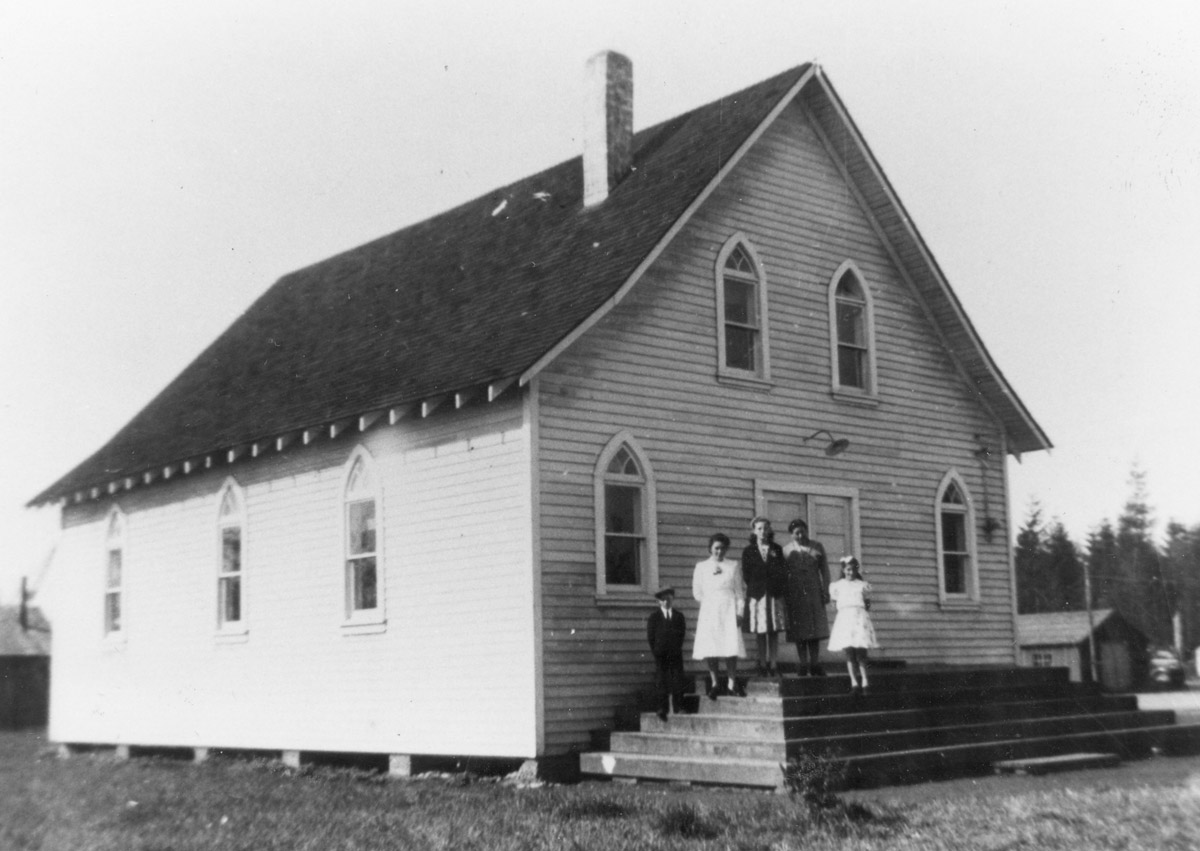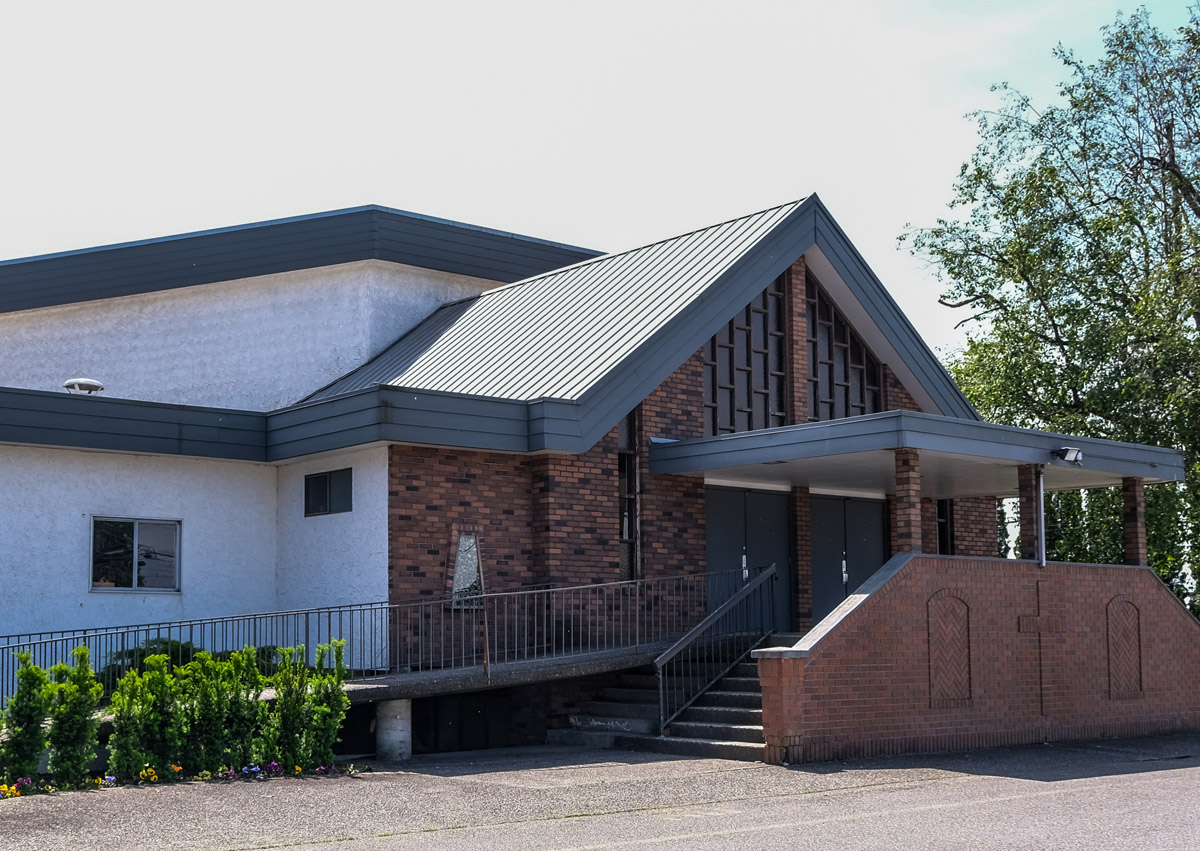West Abbotsford Mennonite Church(2)
The West Abbotsford Church has a rich history that began in 1931 with Mennonite settlers in Abbotsford, British Columbia. They established the Abbotsford Mennonite Brethren Church, which later became the United Mennonite Church of Abbotsford. The church experienced growth, built a larger sanctuary, and played a role in establishing daughter congregations. It changed its name to West Abbotsford Mennonite Church in 1950 and went through transitions, including language dynamics and the establishment of Eben-Ezer Mennonite Church. It adapted to challenges, merged with Wellspring Christian Fellowship in 2008, and became Level Ground Mennonite Church. The church's impact extended beyond numbers, producing missionaries and serving Mennonite communities.
* * *
The West Abbotsford Church has a rich history that began in 1931 when the first Mennonite settlers arrived in Abbotsford, British Columbia. They found fertile land between Huntingdon Road and the United States border, previously logged five years earlier, where they established their homes. Initially, Mennonite families gathered for worship in their own houses. However, in May 1932, the Mennonite Brethren families organized the Abbotsford Mennonite Brethren Church, which attracted not only Mennonite Brethren but also other Mennonite families.
The congregation formally organized on November 15, 1936, under the name Abbotsford Mennonitengemeinde. Later, it changed to the United Mennonite Church of Abbotsford when it joined the Conference of United Mennonite Churches of British Columbia. The first structure, made from lumber from the dismantled Mill Lake Lumber Mill, was built on land donated by the municipality at the corner of King and Townline Roads. The church's growth was remarkable, especially during the leadership of Heinrich M. Epp from 1946 to 1958. To accommodate the increasing number of post-World War II refugees and newcomers from Europe, Paraguay, and Mexico, a larger sanctuary was built in 1946, expanded in 1949, and became known as the "long church" with a seating capacity of 600.
The congregation's influence extended beyond its walls. It played an active role in the establishment of daughter congregations such as Peardonville Mennonite Church (1952) and Clearbrook Mennonite Church (1953), which eventually gained their autonomy. In 1950, the church changed its name to West Abbotsford Mennonite Church (WAMC), reflecting its commitment to the local community. Furthermore, the church engaged with the Prairie Chapel outreach, spreading its impact further.
Throughout its journey, the church experienced several transitions. Language dynamics shifted as English was gradually introduced into worship services, responding to the changing needs of the community. The church also facilitated the establishment of Eben-Ezer Mennonite Church in 1963, honoring the desire of German-speaking immigrants to maintain their language during worship.
Under the leadership of Peter Harms (1968-1971) and Dietrich Rempel (1972-1981), the church continued to evolve. Female deaconesses were introduced, and a new sanctuary was constructed in 1975-76 to provide an inviting space for worship. However, the congregation faced challenges, including charismatic influences and changing demographics that led some members to seek spiritual communities elsewhere. Despite these obstacles, West Abbotsford Church adapted, incorporating contemporary choruses into their worship and remaining dedicated to nurturing a diverse congregation.
In 2008, the church embarked on a transformative journey by merging with Wellspring Christian Fellowship. This union resulted in the birth of Level Ground Mennonite Church, a community that emphasizes equality and unity under the banner of Christ's cross. The merger demonstrated the church's commitment to faith, community, and service.
While the membership of West Abbotsford Church experienced fluctuations over the years, its impact extended far beyond numbers. The congregation produced missionaries, church workers, and committed individuals who served Mennonite communities across North America and beyond. Its legacy of compassionate outreach and transformative ministry continues to shape lives and communities, serving as a testament to the enduring faith that guided the West Abbotsford Church throughout its remarkable journey.
The congregation formally organized on November 15, 1936, under the name Abbotsford Mennonitengemeinde. Later, it changed to the United Mennonite Church of Abbotsford when it joined the Conference of United Mennonite Churches of British Columbia. The first structure, made from lumber from the dismantled Mill Lake Lumber Mill, was built on land donated by the municipality at the corner of King and Townline Roads. The church's growth was remarkable, especially during the leadership of Heinrich M. Epp from 1946 to 1958. To accommodate the increasing number of post-World War II refugees and newcomers from Europe, Paraguay, and Mexico, a larger sanctuary was built in 1946, expanded in 1949, and became known as the "long church" with a seating capacity of 600.
The congregation's influence extended beyond its walls. It played an active role in the establishment of daughter congregations such as Peardonville Mennonite Church (1952) and Clearbrook Mennonite Church (1953), which eventually gained their autonomy. In 1950, the church changed its name to West Abbotsford Mennonite Church (WAMC), reflecting its commitment to the local community. Furthermore, the church engaged with the Prairie Chapel outreach, spreading its impact further.
Throughout its journey, the church experienced several transitions. Language dynamics shifted as English was gradually introduced into worship services, responding to the changing needs of the community. The church also facilitated the establishment of Eben-Ezer Mennonite Church in 1963, honoring the desire of German-speaking immigrants to maintain their language during worship.
Under the leadership of Peter Harms (1968-1971) and Dietrich Rempel (1972-1981), the church continued to evolve. Female deaconesses were introduced, and a new sanctuary was constructed in 1975-76 to provide an inviting space for worship. However, the congregation faced challenges, including charismatic influences and changing demographics that led some members to seek spiritual communities elsewhere. Despite these obstacles, West Abbotsford Church adapted, incorporating contemporary choruses into their worship and remaining dedicated to nurturing a diverse congregation.
In 2008, the church embarked on a transformative journey by merging with Wellspring Christian Fellowship. This union resulted in the birth of Level Ground Mennonite Church, a community that emphasizes equality and unity under the banner of Christ's cross. The merger demonstrated the church's commitment to faith, community, and service.
While the membership of West Abbotsford Church experienced fluctuations over the years, its impact extended far beyond numbers. The congregation produced missionaries, church workers, and committed individuals who served Mennonite communities across North America and beyond. Its legacy of compassionate outreach and transformative ministry continues to shape lives and communities, serving as a testament to the enduring faith that guided the West Abbotsford Church throughout its remarkable journey.


